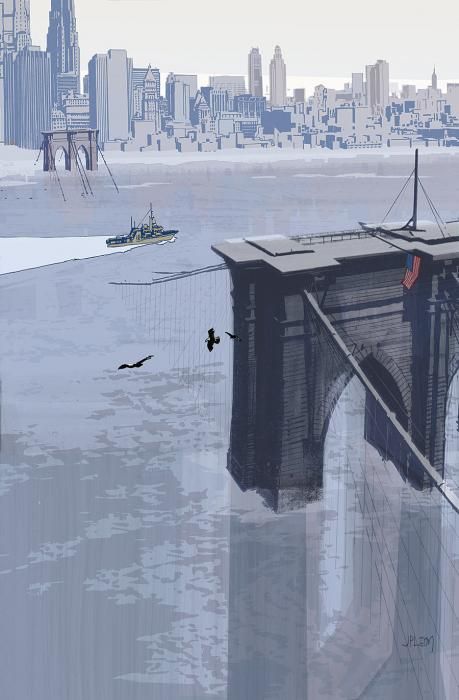Following the series-altering events of last issue, writer Brian Wood takes readers to an anticipated but previously unseen present-day locale in "The Massive" #13, which also features the return of regular series artist Garry Brown.
It's a change that's rather welcomed, at least by readers who might have started to tire of the series' central premise that admittedly took the cast on a fascinating journey to all corners of a near-future dystopian world, but was starting to wear a little thin by virtue of its increasingly obsessive nature. As captain of seagoing vessel The Kapital, Callum Israel's ongoing search for his activist group's missing sister ship, The Massive, was a critical plot device for all of the storylines in the series' first dozen issues. Like the Battlestar Galactica's meandering search for the thirteenth tribe, a similar sense of aimlessness was starting to creep into those stories, and while all of this series' arcs were strong, the catalyst for them was in danger of becoming contrived.
With this thirteenth issue, though, Wood leaves that premise on the table and gives Israel another objective, one that's far broader and is primed to serve as a catalyst for countless more story arcs. And with this shift comes a change in direction for the Kapital and her crew, both literally and figuratively, one that has the potential to refresh this series at a time when only the faintest whiffs of staleness could be detected.
Wisely, Wood doesn't take a radical shift. Instead, he revisits a story thread from a past arc that's well-suited to an altered series direction, but is right at home with the anarchic, look-over-your-shoulder feel that he's established so well and so pervasively over the short history of this comic. As he demonstrated in "DMZ" and "Channel Zero", that's what Wood does best: construct a war-torn, disaster-ridden, crisis-infested world that's been brought low by events and situations already around us. A post-dystopian world from the mind of Brian Wood is a far scarier one than one with zombie infestations or alien invasions, because the reasons for it are realistic enough to be on just this side of believable.
In "The Massive," Wood's post-crash world is one that wasn't brought to its current state by a singular, apocalyptic event -- it's a slow death by the thousand cuts of global economic unrest, social and political change, environmental disasters, and a myriad of other troubles that by themselves could be (and have been) overcome, but collectively prove too much for the world's infrastructure to withstand. As he's done in every issue, Wood continues to reveal the nature of these upheavals in the form of narrative flashbacks, which not only enhance the ongoing story but also provide an ever-widening look at the true extent the damage the world has suffered. It's like our planet has become the proverbial train-wreck; it's a terrible mess and there are casualties everywhere, yet it's too compelling to look away from.
Few could interpret this bleak and threatening world better than Brown. His characters look grizzled and hardened, like they've been living a lifetime of hardship. His flooded coastal cities, desolate locales and cold, sterile confines of the Kapital evoke the despair of this injured world. And, credit should also go to colorist Jordie Bellaire, whose limits on the number of colors on any given page not only enhance the dark mood throughout but makes for effective scene transitions.
For all of the bleakness and despair, Wood's central character's stubborn refusal to give up on the world gives the comic an underlying feeling of hope. Fighting sickness, a crew filled with discontent and a world gone mad, Israel's renewed belief that the world can fixed, at least to some degree, is just enough to keep this series from drowning in its own darkness. For anyone who gave up on the series, or has yet to give it a try, now's the time.

